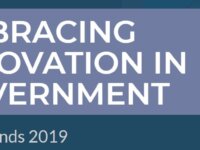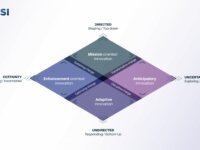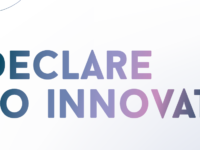
You’re invited to OPSI’s next webinar, on the topic of global trends in public sector innovation. Members of the OPSI team will be joined on the webinar by a colleague from the UAE’s Mohammed Bin Rashid Centre for Government Innovation (MBRCGI). As you may have seen, OPSI and the MBRCGI recently launched Embracing Innovation in Government: Global Trends 2019, the culmination of the third year of an ongoing partnership. In the webinar, we’ll walk you through…
Abraham Maslow once wrote, “I suppose it is tempting, if the only tool you have is a hammer, to treat everything as if it were a nail.”[1] This snappy quote captures the insight that our behaviour tends to be shaped by the tools we have at hand, and the tools we have at hand shape how we see the world and what is possible. In this post, I would like to explore our emerging thinking...
This guest post is written by Leeanne Douglas from BizLab within the Australian Government. We have learned lots of lessons running the first human centred design academy in the Australian Government. It has been a bit of trial and error for us, so we thought we would share a few things that might help others in the same position. BizLab, an innovation hub within Australia’s Department of Industry, Innovation and Science, was established in 2016....
A reflection on a workshop co-designed with Piret Tõnurist and Kevin Richman as part of a programme led by Piret Tõnurist. Building on OPSI’s ongoing systems work, including in Scotland, Finland, and Slovenia, the team travelled to Estonia to learn about their policymaking approach and design a custom workshop module to build capacity around systems-thinking. I am sharing the tools and materials here in case others find them useful. This session comprised a module in a...
Welcoming your thoughts on our next AI primer Last year, the OPSI team launched the “Blockchains Unchained” report. This was the first working paper in a series intended to provide the public sector with an overview of the necessary knowledge about a specific emerging technology. The report also aims to help stakeholders understand the challenges and opportunities associated with the technology. To inform public servants and policymakers, OPSI not only draws from academic discussions but...
This blogpost was initially published by Justin Von Etzdorf on Linkedin. Justin submitted a case study to the OPSI 2018 Call for Innovations regarding Carrot Rewards (an innovative app that combines gamification and BI to allow governments to better understand its constituents). You can learn more about Carrot Rewards on our Case Study Database or in our new Embracing Innovation in Government: Global Trends 2019 report. He shares his experience in his own words: As...
The Draft OECD Declaration on Public Sector Innovation has been open since the 20th of November 2018, when the draft was launched at the Innovation in Government: Steps, leaps and bounds conference. Public consultation will close on the 22 of February 2019. To aid people in this last stretch of the consultation, we hosted a webinar where we discussed: How Canada developed and used its Federal, Provincial and Territorial Declaration on Public Sector Innovation How France...
We are happy to announce that OECD Secretary-General Angel Gurría launched OPSI’s report “Embracing Innovation in Government: Global Trends 2019” today at the World Government Summit! The event in Dubai is the largest annual gathering in the world focused on shaping the future of governments through innovation. The report is the result of a global innovation review conducted by OPSI in partnership with UAE’s Mohammed Bin Rashid Centre for Government Innovation (MBRCGI). The review…
This blog also appeared on Apolitical Not too long ago, I moved from Sydney to Paris. No amount of book-learning could have prepared me for the rapidity of spoken Parisian French nor the sharp and shaming rebuke of unimpressed store clerks when my failure to communicate well held up the line. This isn’t to say I didn’t learn a few things before immigrating. Au contraire. Skilled in the way of Australian small talk, I was very...
OPSI will host a webinar on the 13 February 2019 at 3pm (Paris time) on its draft Innovation Declaration. it will give country case studies on the use and usefulness of innovation declarations, overview the concepts underpinning OPSI's Declaration and offer practical guidance on how people can participate in the public consultation on the draft.









